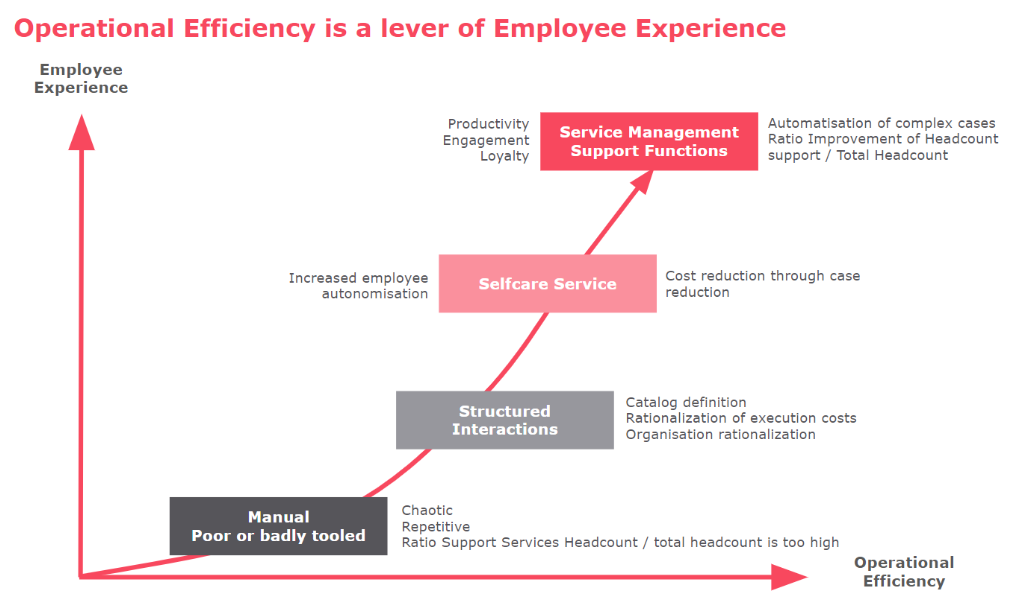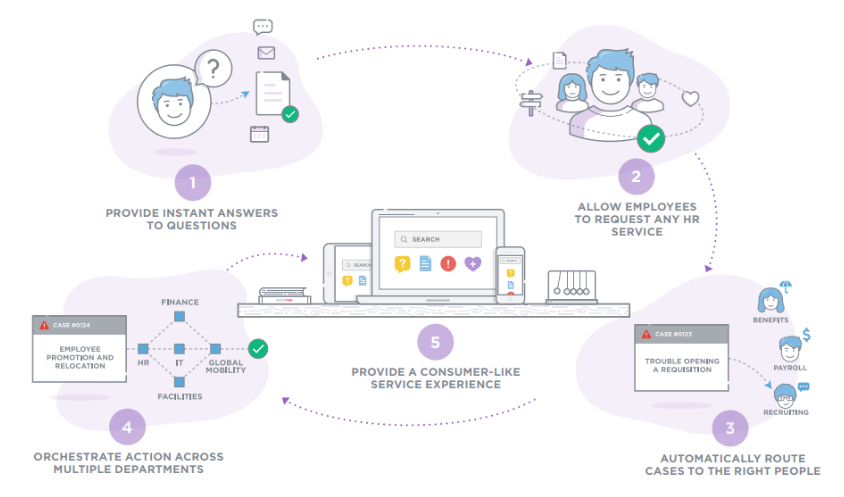
Digitalization and automation have become key drivers of business success in today’s fast-paced world. The same is true for Human Resources, where the adoption of technology has the potential to revolutionise the way HR teams operate and support the organisation’s mission and goals. The HR Trend Institute reports one megatrend that has been shaping HR in the last few years – “from technology as ‘nice to have’ to technology as a major transformational driver.” The shift towards digitalization and automation of HR processes has become increasingly important as 94% of HR leaders are concerned about their organization’s ability to deliver on the transformation agenda, according to Mercer’s Global Talent Trends survey.
What is digitalization when it comes to HR?
Digitalization refers to the process of using technology to improve and streamline HR processes and services. This can include everything from designing seamless onboarding or offboarding experiences to using data and analytics to gain insights into employee behaviour and performance.
What is automation when it comes to HR?
Automation refers to the use of technology to automate certain tasks or processes. This can include anything from automating the onboarding process to automating the tracking of employee time and attendance. With the help of digitalization and automation, organizations can deploy unified portals for employees to send their demands and for HR to handle them and steer their activity.
What are the benefits of HR digitalization?
The impact of digitalization and automation on HR has been significant. By digitizing HR processes and services, organisations can improve the employee experience, increase efficiency, and reduce costs. This is because digitalization allows HR teams to automate repetitive tasks, such as data entry, payroll processing, request tracking, and record-keeping, freeing up time for more value-added activities such as employee engagement, talent management, or learning and development.
Automation also allows HR teams to provide employees with self-service options, such as online portals for benefits management and PTO requests, which improves the employee experience and reduces the workload on HR teams.
HR data is increasingly digitised, which means that it can be used more efficiently than ever before. HR departments can use more accurate data to make better decisions about people management issues, such as recruitment or training. This, in turn, improves employee satisfaction levels and productivity within organizations.
As illustrated in Figure 1, the higher the operational efficiency, the better the employee experience.

What’s in it for the employee?
HR is the owner of the onboarding process of an employee, starting from the recruiting process until the employee effectively starts working for the company. In the meantime, several activities have to be orchestrated: contract signing, starting date, employee creation in HR systems, employee creation in IT systems, and provisioning of equipment (laptop, mobile phone, and any other physical equipment required for the job). When the orchestration of this end-to-end process becomes fluent, HR can make sure no action has been forgotten.
Some low-value actions can also be automated, giving the HR team time to focus on more valuable tasks (having a conversation with the future employee to make sure he already feels included, for instance). This is the first experience an employee has with the organization.
In the same manner, the offboarding process needs to be fluid and easy. It is the last experience an employee has with his organisation and needs to be well coordinated. It often happens that employees come back after a few years, thus the importance of the memory.
What’s in it for HR?
HR teams need to free up time to really take care of employees. When low-value administrative tasks are automated, HR can spend time on high-value activities.
In large enterprises, interactions with HR are made very complex:
- there is no single communication channel (employees can contact HR by mail, phone, messaging apps or by going directly to the desk)
- employees don’t have a clear understanding of HR team members (who’s in charge of payroll/training/leave requests?)
- HR spends a lot of time to re-route the requests to the right person. They have no traceability. It may happen that a request is not handled correctly or in a timely manner, making the employees unhappy.
Having a platform for employee interaction facilitates the management of daily activities (direct assignment of a request, progress tracking, dashboards for quickly visualising important data).
More globally, the “talent war” also applies to HR teams. Organisations need to make sure the HR experience is attractive and modern for employees, in order for them to stay in the company.
Where do you start with HR digitalization?
One of the key tools for digitalizing HR is orchestration. ServiceNow is one example of a platform that can be used to automate and orchestrate HR processes. This cloud-based platform allows HR teams to manage daily activities, such as onboarding, performance management, and compliance, in a single, integrated system. More tactical tools can also be deployed such as RPA solution, subject to the deployment of a strong governance between IT and business stakeholders. This not only simplifies the HR processes but also improves data accuracy and security and makes it much simpler for the employees to navigate and access their HR-related information.
Digital transformation has also affected HR in terms of data and analytics. With the rise of software tools, HR departments now have access to more data than ever before. This data can be used to make more informed decisions, track employee engagement and performance, and measure the effectiveness of HR initiatives.
Figure 2 illustrates how a platform like ServiceNow can help with orchestrating HR processes:

Devoteam is supporting multiple clients in their HR transformations. From our experience, we recommend a pragmatic approach. We start with one initial process to demonstrate the benefits of digitalization for HR representatives, making them become ambassadors for the next deployment. The onboarding process is often a good starting point, as it is complex and embeds several actors. Change management is critical for such transformation as it will impact both HR functions (new processes and tools) and globally the employees of an enterprise (new processes). Last but not least, we recommend value-based steering to make sure that what is delivered meets the expectations.
Customer Success Story in HR Digitalization
One of our customers had a manual and tedious onboarding process. The actions were taking a long time, emails were lost, and the average time for a new employee to receive his laptop used to be 10 days. Now, the employees receive their laptops on day one thanks to process digitalization. A simple math calculation shows that our customer saves €350,000 monthly (50 onboardings per month x €700 average cost per day x 10 days).
Should everything in HR be automated?
As Jeff Goldblum’s character from the Jurassic Park movie puts it: “Your scientists were so preoccupied with whether or not they could, they didn’t stop to think if they should.” In our opinion, not all tasks should be automated. Meaningful conversations and decision-making are still important and should be handled human to human, not app to human. Find the balance between automation and live interaction to ensure the people are at the top of the agenda and deliver on total well-being.
In Conclusion
After years of being considered a “support function,” HR is now seen as a “business partner.” Enterprises are now investing in their HR transformation to give them more power (internal/external) and accelerate their efficiency. Trends such as “The Great Resignation” or “Quiet Quitting” are proof that enterprises need HR in order to retain their employees and attract future ones. Digitalization and automation can bring significant benefits to organizations, freeing up HR teams from manual, repetitive tasks, so they can focus on more strategic activities.
Find this article interesting?
Check out our automation-led strategies are transforming employee and customer experiences e-book to learn more.